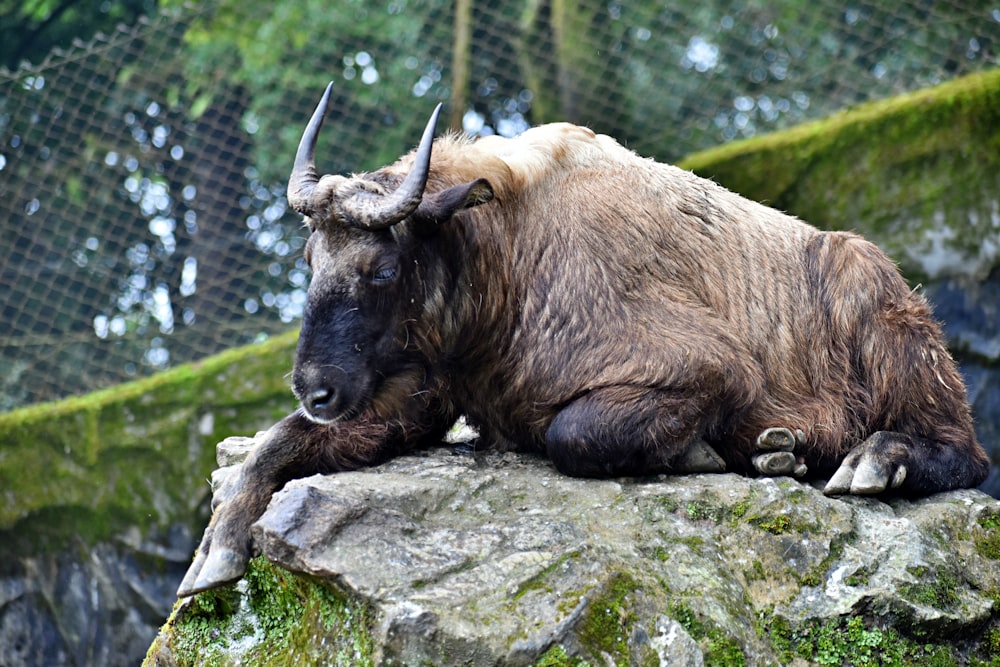Unveiling the Mysteries of the Majestic Takin
A Himalayan Icon
The Takin, also known as the “gnu goat” or “cattle chamois,” is a unique and fascinating creature that roams the rugged landscapes of the Eastern Himalayas. With its stout build, shaggy coat, and majestic horns, the Takin cuts an imposing figure against the backdrop of Bhutan’s towering peaks.
Anatomy and Appearance
Standing at around four to five feet tall at the shoulder and weighing up to 600 kilograms, the Takin is one of the largest mammal species found in the Himalayas. Its thick, woolly coat provides insulation against the cold mountain air, while its distinctive curved horns can grow up to 30 inches in length, adding to its formidable appearance.
Habitat and Range
Takins are primarily found in the dense forests and alpine meadows of Bhutan, as well as parts of China and India. They are well-adapted to life in high-altitude environments, where they graze on a variety of vegetation, including grasses, shrubs, and bamboo. Their ability to traverse steep terrain makes them well-suited to the rugged landscapes of the Himalayas.
Social Behavior and Reproduction
Takins are social animals, typically forming small herds consisting of females and their young, led by a dominant male. During the mating season, which typically occurs between July and August, males engage in elaborate displays to attract females, including vocalizations and scent-marking. Females give birth to a single calf after a gestation period of around eight months.
Ecological Importance
As herbivores, Takins play a crucial role in shaping the ecosystems of the Eastern Himalayas. By grazing on vegetation, they help maintain the balance of plant communities and prevent the encroachment of invasive species. Additionally, their presence contributes to soil health and nutrient cycling, making them integral components of the mountain ecosystem.
Cultural Significance
In Bhutanese culture, the Takin holds special significance as the national animal of the country. It is revered as a symbol of strength, resilience, and natural beauty, embodying the spirit of the Himalayan wilderness. Takin-themed artwork, festivals, and ceremonies are common throughout Bhutan, celebrating the unique heritage of this majestic creature.
Conservation Status
Despite their cultural importance, Takins face numerous threats to their survival, including habitat loss, poaching, and human-wildlife conflict. Conservation efforts are underway to protect Takin populations and their habitats, including the establishment of protected areas and the implementation of community-based conservation initiatives.
Challenges and Solutions
Addressing the conservation challenges facing Takins requires a multi-faceted approach that involves collaboration between governments, conservation organizations, local communities, and researchers. By promoting sustainable land management practices, reducing human-wildlife conflict, and raising awareness about the importance of Takin conservation, we can ensure the long-term survival of this iconic Himalayan species.
Research and Education
Further research into Takin ecology, behavior, and genetics is essential for informing conservation efforts and developing effective management strategies. Education and outreach programs aimed at local communities and visitors can help foster a greater appreciation for Takins and their role in the Himalayan ecosystem, inspiring stewardship and conservation action.
Preserving a Himalayan Treasure
As guardians of the Eastern Himalayas, it is our responsibility to protect and preserve the majestic Takin for future generations. By working together to address the threats facing this iconic species, we can ensure that it continues to roam the mountains of Bhutan and beyond, captivating hearts and minds with its enduring beauty and grace. Read more about takin


